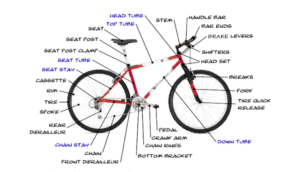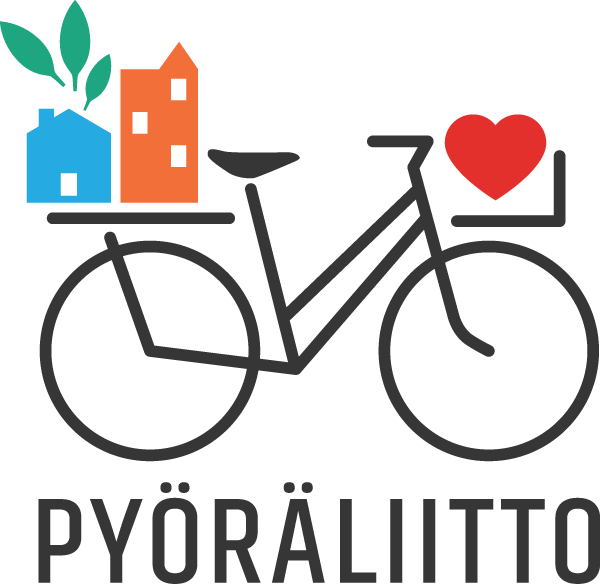If you were not able to learn to ride a bike as a kid, you’re no longer alone and you’re not too late. In this article, we’ll explain to you some simple steps to help get you rolling and build up your confidence on two wheels.
Before you get began learning to ride, here are some suggestions to keep in mind.
- Be patient: Don’t try to force the process. If you find yourself getting worn-out or frustrated, take a break and come back to it later. Shorter, more focused practice sessions may be a better method than trying to do too much all at once.
- Don’t give up: You may not learn to pedal right away, but by keep practicing, you’ll get it. Remember that each time it’s going to get a little bit easier.
Get to know your bicycle

The right bike and location
- Find a bike that fits you: You should be able to stand on your bike with your feet flat on the ground and your crotch at least a couple inches above the frame. A bike that’s comfortable will be easier to steer and control.
- Make sure your helmet fits: A good-fitting helmet should be snug but not too tight. It should sit level on your head (not tilted back) with the front edge one inch or less above your eyebrows so your forehead is protected.
- Remove the pedals and lower the seat: You should be able to sit upright on the seat with both feet flat on the ground. Most adults learning to ride for the first time are scared of falling—being able to put your feet down to balance helps build confidence. How to remove the pedals (video).
- Find a flat, open space to learn: Find a paved area that is large and flat, such as an empty tennis or basketball court or a parking lot. Avoid grassy areas because you won’t be able to get enough speed on them to learn to coast and glide.
Let’s start learning!
Practice Getting On and Off the Bike
Once you set up your bike, it’s a good idea to practice getting on and off of it. Stand on one side of the bike and lean it toward you to make it easier to straddle. Do it several times until you’re comfortable.
Learn to Coast Without Pedals
Now it’s time to get on the bike and learn to coast without using pedals. While seated, take small steps so you’re moving forward on your bike. Then take longer “running” strides where you reach one foot forward as if you’re running. Practice this several times. As you get more comfortable with these “running” steps, try to get more speed and then pick up your feet if you can—even if it’s for a second or two. Get a feel for how to balance. Keep practicing this, trying for longer stretches where you’re able to pick up your feet and balance on the bike. It will be much easier to balance if you get a little bit of speed going. You can also practice coasting by pushing off from the top of a mildly sloping hill ‘scooting’ along with your feet to gain a bit of speed and gliding for as long as possible, this is how to gain balance.
- Breaking: While coasting practice braking by gently squeezing both brakes levers to stop.
- Steering while coasting: As you learn to coast for longer periods of time, practice turning to the right and left. Eventually try doing large figure eights, making wide turns in both directions.
- Tips: Look up and forward toward where you want to go. Try to keep your body upright.
Watch our videos on learning how to coast and balancing:
Learn to Pedal
When you’ve gotten the hang of balancing and steering for longer periods, it’s time to put the pedals back on the bike. For now, keep the seat in its lowered position so you can still put both feet on the ground to stop while breaking.
Pedaling from a Stopped Position
With the pedals back on the bike, it’s time to learn how to move from a stopped position. There are several strategies to do this. (If your bike has gears, make sure it’s in a low gear.)
Sit on the seat with one foot flat on the ground and the other on a pedal raised at the 1- to 2-o’clock position. (You won’t have enough momentum if the pedal is too level.) Press down hard on the pedal in the high position and push backwards with the foot on the ground.This pressure will give the bike its forward momentum. while always looking forward (if you look down at your feet you will lose balance), raise the other foot and place it on the pedal and start pedaling.
Pedaling using a soft downhill slope
As we suggested for the coasting exercise you can also use a sof downhill slope to get enough momentum to be able to raise the second foot and place it on the other pedal.
Videos on learning how to pedal:
Steering and Turning
Once you’re able to pedal a bike for longer stretches of time, practice turning and steering. Try doing figure eights. Turn wide first and then make smaller turns. Generally, most people find turning to one side is much easier than the other.
Tip: As you’re learning, try not to pedal through the entire turn or you’ll go too fast to make a controlled turn. Anticipate the turn, ease off the pedal and coast, make the turn and then pedal when you come out of that turn.
Video on how steering and turning:
Learning to ride a bike takes time. You may not be fully riding in one day, but with continued practice you can do it! You too will reach that “a-ha” moment where it all comes together and you’ll be pedaling.
Text: Fabrizio Turci
Immigrants on bikes! -project
